
Juan is a child with Down syndrome; therefore, I look for strategies to integrate knowledge. According to the particular way of learning and the preference or style of processing, I decide to build the didactic material. Juan likes to disassemble and assemble, so I thought of making cardboard numbers from 1 to 5, the number sequence, which is a topic developed in the 5th grade class he attends. The design has three intentions: recognition, matching, and the succession of numbers.
Queridos, productores de ideas en el hogar, les saludo y les comparto una estrategia simple y efectiva que nació de manera repentina con material reciclable para comprender la secuencia numérica. La estrategia nace porque el niño que recibe mi apoyo, me motiva a crear propuestas que faciliten la integración escolar y el aprendizaje. La madre desde la casa refuerza los conocimientos y habilidades, por ello es importante el concepto matemático sucesión en la formación del niño.
Pitu es un niño con Síndrome de Down, por tanto, busco estrategias para integrar el conocimiento. De acuerdo a la manera particular de aprender y según la preferencia o estilo de procesar, decido construir el material didáctico. A Pitu le gusta desarmar y encastrar, entonces pensé en hacer en cartón los números del 1 hasta el 5, la secuencia numérica, es un tema desarrollado en sala de 5 a la que asiste. El diseño tiene 3 intenciones, reconocimiento, emparejar y sucesión de los números.
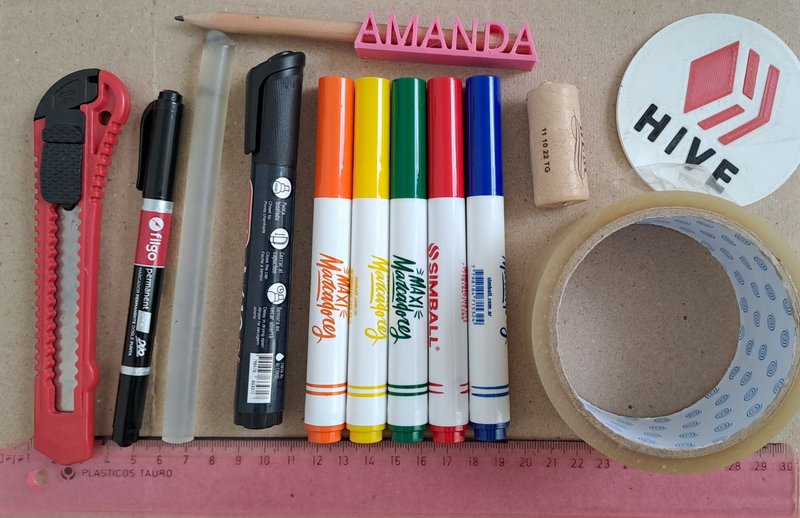
🇺🇸ENGLISH🇺🇸 | 🇪🇸 ESPAÑOL 🇪🇸 |
|---|
Construction of the numerical board | Construcción del tablero numérico |
|---|---|
| Materials | Materiales |
| - Choose 2 rectangular cartons of the same width and one less tall | - Elijan 2 cartones rectangulares del mismo ancho y uno menos alto |
| - Color markers | - Marcadores de colores |
| - Black marker with a thick tip and a thin tip | - Marcador negro punta gruesa y uno punta delgada |
| - Packing tape | - Cinta de embalaje |
| - Pencil | - Lápiz |
| - Cutter | - Cutter |
| - Silicon cold or | - Silicón frío o caliente |
| - Rule | - Regla |
| - 10 Corks | - 10 corchos |
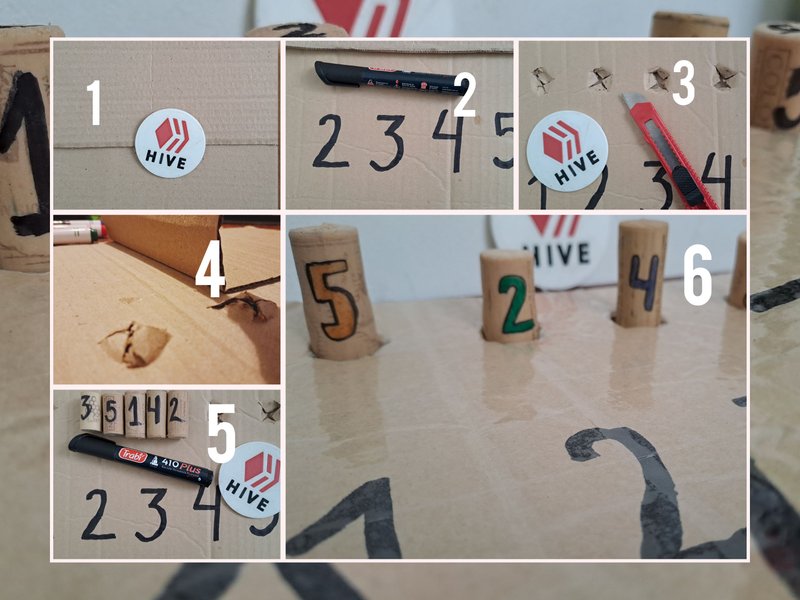
Preparation of the numerical board | Elaboración del tablero numérico |
|---|
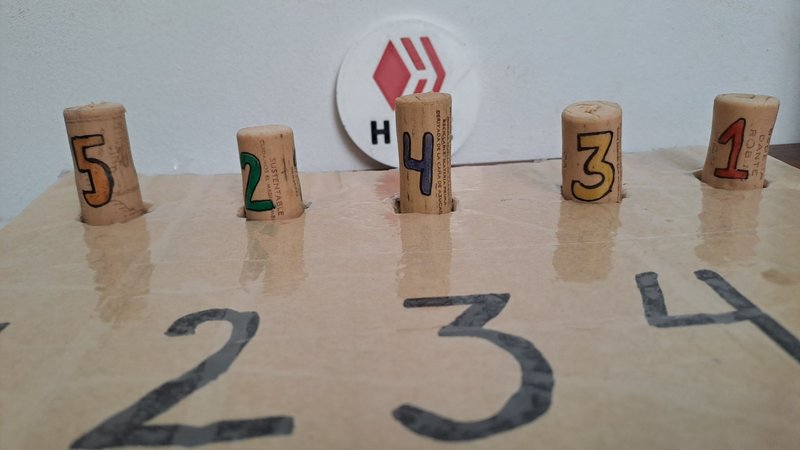
How do I use the number board? Prior to this strategy, teach the numbers with the Montessori method because it will help the child recognize, match, and perform numerical succession on the board.
Variants: four (4)
- First variant: ask the child the number randomly and place it in the corresponding place.
- Second variant: order numerical pairs, the digits, starting with the corks that have the black-colored numbers and then the corks that have the colored numbers. Mix the corks as an exercise in compression of the numbers.
- Third variant: start with the digit 1 to make the succession, that is, the number that follows after the 1 following the model of the board; start first with the black numbers and then the colored ones. Then combine the corks.
- Fourth variant: make the sequence by covering the model on the board and asking to match the numbers in order to start the sequence. In the same way, put the corks together to promote the concept of succession.
¿Cómo usar el tablero numérico? Previo a esta estrategia, enseñar con el método Montessori los números porque servirá en el niño reconocer, emparejar y realice sucesión numérica en el tablero.
Variantes: cuatro (4)
- Primera variante: pedir al niño el número de manera aleatoria y colocar en el lugar que corresponda.
- Segunda variante: ordenar parejas numéricas, los dígitos, iniciar encastrando los corchos que poseen los números de colores negros y luego los corchos que tienen los números de colores. Mezclar los corchos como ejercicio de compresión de los números.
- Tercera variante: iniciar con el dígito 1 para hacer la sucesión, es decir, el número que sigue después del 1 siguiendo el modelo del tablero; empezar primero con los números en negro y luego los de colores. Después, combinar los corchos.
- Cuarta variante: hacer la secuencia tapando el modelo del tablero y pedir que encastre ordenando los números para empezar la sucesión. De igual manera, unir los corchos para promover el concepto de sucesión.
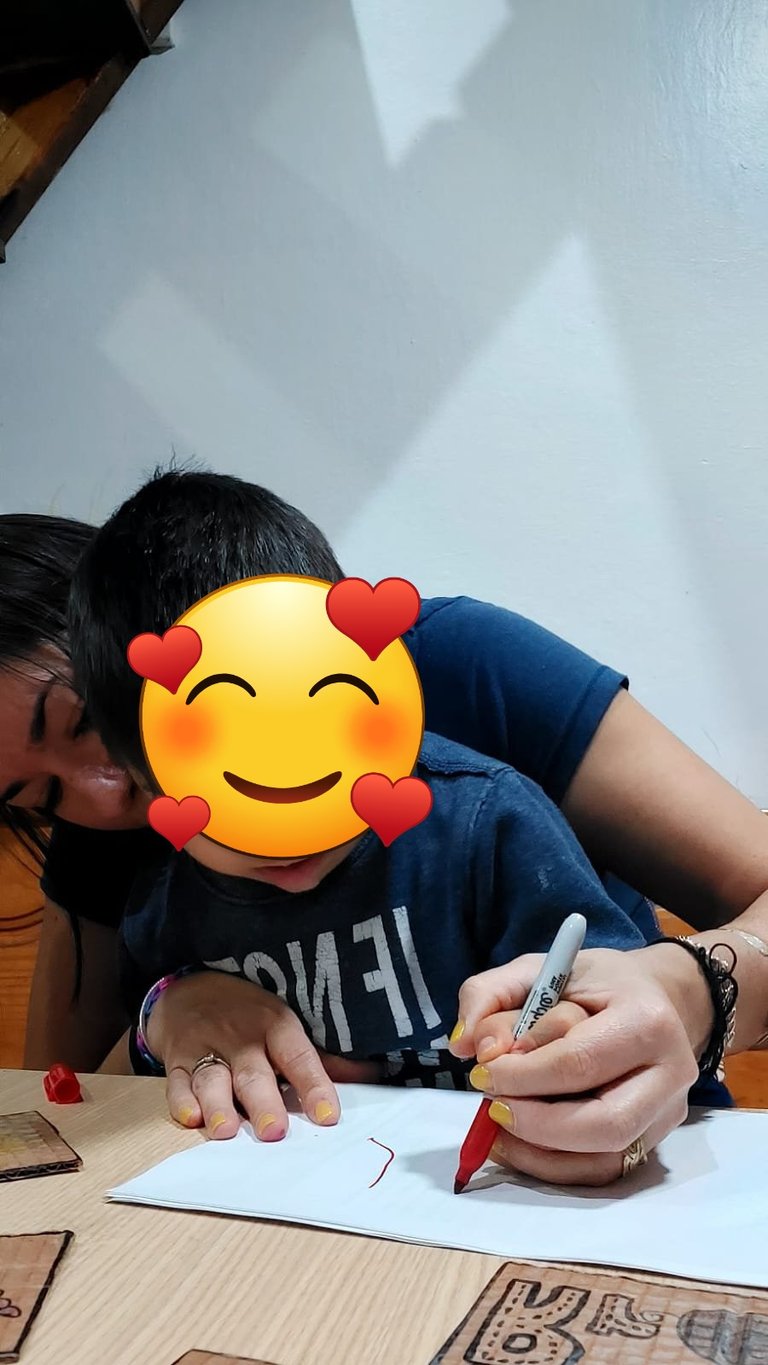
It is advisable to start with the child's previous knowledge to explain the slogan and the activity. On this occasion, Pitu has difficulty with the last variant; therefore, the illustrative model (teacher) is one of the ways Pitu learns by observing how to perform the activity. Practice allows the knowledge and skill to be fixed, but the concept becomes meaningful when put to use in other scenarios. The strategy is the bridge or scaffolding to make the knowledge one's own, and together with the experiences, they are the engine to learn and use it. Pitu's mother exercises at home so that the child is independent; she also makes sure to share with the integrator (@amandaj) the intentions and receive guidance to reinforce learning. Education is the best bastion for developing autonomous and intelligent beings. Pitu receives education at home from the hands of a mother committed to raising a happy child who learns ideas and is an active member of society. The number board is useful at home to enrich mathematical knowledge, provide information that is used in everyday life, and develop fine motor skills.
Es recomendable partir de los cocimientos previos del niño para explicar la consigna y la actividad se ejecute. En esta ocasión, Pitu se le dificulta la última variante, por consiguiente, el modelo ilustrador (docente), es uno de los modos de aprender de Pitu al observar cómo realizar la actividad. La práctica permite fijar el conocimiento y la habilidad, pero el concepto se convierte en significativa cuando se pone en uso en otros escenarios. La estrategia es el puente o andamio para hacer propio el saber y junto a las experiencias son el motor para aprender y usarlo. La madre de Pitu ejercita en el hogar para que el niño sea independiente; además se asegura de compartir con la integradora (@amandaj) las intenciones y recibir orientaciones para reforzar los aprendizajes. La educación es el mejor bastión para desarrollar seres autónomos e inteligentes, Pitu recibe educación en el hogar de la mano de una madre comprometida en formar un niño feliz, que aprenda ideas y sea un miembro activo de la sociedad. El tablero numérico es útil en la casa para enriquecer el conocimiento matemático, información que se usa en la vida cotidiana y desarrollar la motricidad fina.
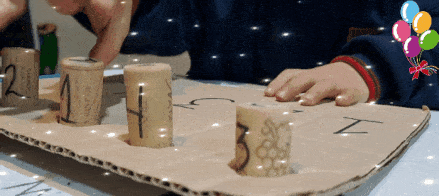
Un comentario equivale un acto de reconocimiento
Primera y tercera imagen creada con la aplicación GridArt. Fotos tomadas con mi móvil Samsung Galaxy A33 G5


Soy miembro de @motherhood



Las publicaciones elaboradas en mi blog son realizadas desde mi móvil Samsung Galaxy A33
It is a challenge to find strategies that adapt to the skills and abilities of our children and that they do not get bored easily. I really like this one because mathematics is a very complex subject to teach and to learn. This strategy combines the ability of memory, manual, concentration as well as being fun.
Hello, @tomaspalomo
It seems like a complex job, but when you like to create based on style, needs and tastes, then the strategies serve the purpose of teaching to learn. Thanks for the comment I loved it, because the strategy has a general purpose, but there are a series of cognitive processes that are involved, you mention the, memory, are also present: observation, analysis, discrimination and synthesis.
Hugs!
It is not easy to work with our special kids because they get tired and bored easily, but this strategy is very well constructed and easy to apply.
Gracias, @emimoron
Es grato tenerte por aquí. La creatividad del docente debe responder a la necesidades de cualquier niño, cada reto en contenido por aprender, merece una estrategia digna del infante y sino cubre, se adapta o se cambia.
Tu estrategia es muy creativa y practica para enseñar los números. Gracias por compartirla.
Saludos y bendiciones
Gracias, @leomarylm
Me alegro que pasaras y evaluaras mi publicación. Agradecida por el espacio en poder compartir ideas que desarrollan conocimientos, habilidades y pensamiento.
This post has been manually curated by @steemflow from Indiaunited community. Join us on our Discord Server.
Do you know that you can earn a passive income by delegating to @indiaunited. We share more than 100 % of the curation rewards with the delegators in the form of IUC tokens. HP delegators and IUC token holders also get upto 20% additional vote weight.
Here are some handy links for delegations: 100HP, 250HP, 500HP, 1000HP.
100% of the rewards from this comment goes to the curator for their manual curation efforts. Please encourage the curator @steemflow by upvoting this comment and support the community by voting the posts made by @indiaunited.
Thank, @indiaunited